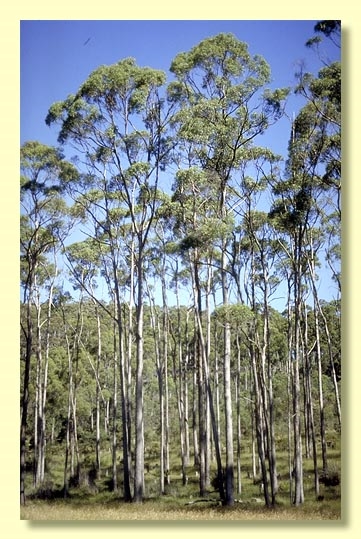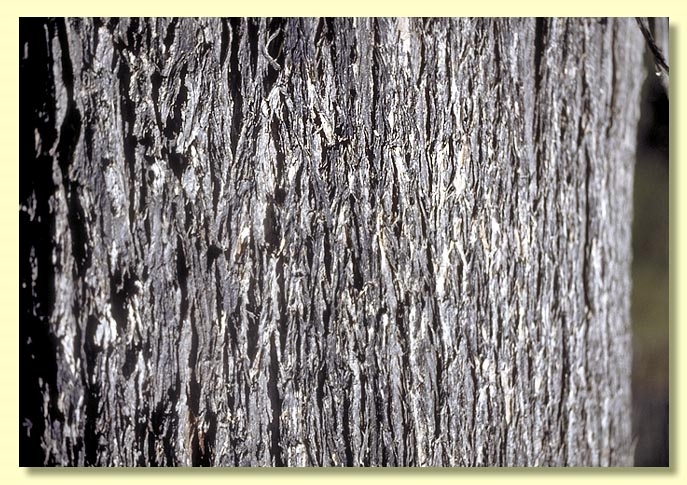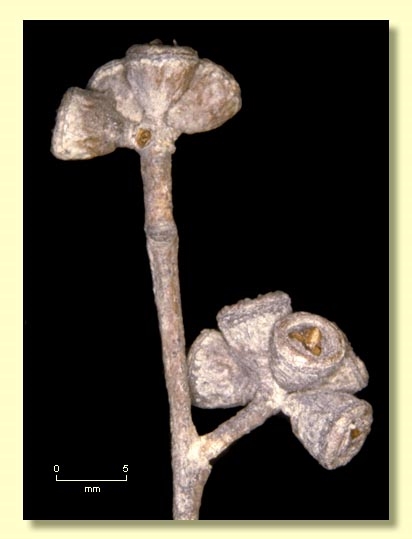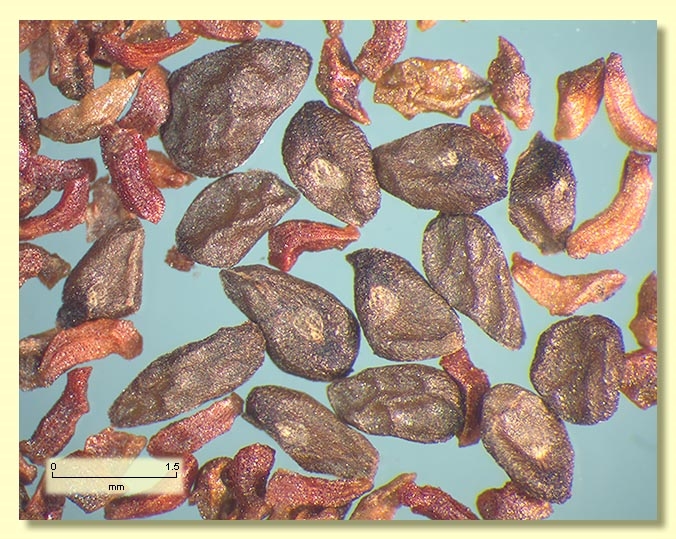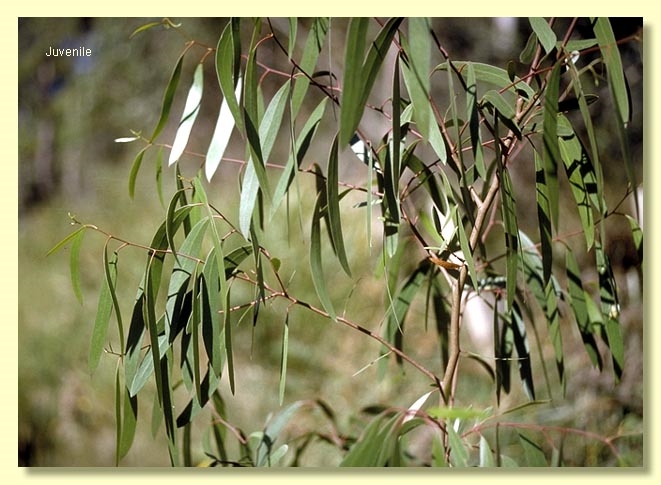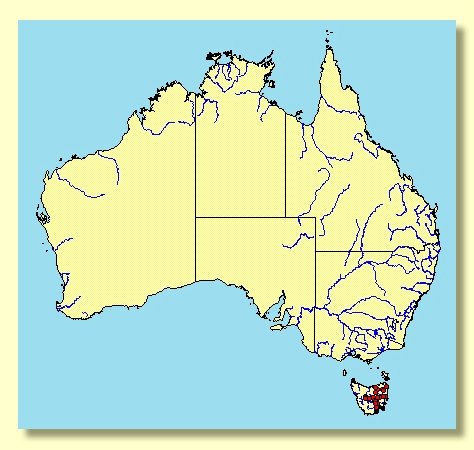Euclid - Online edition
Eucalyptus rodwayi
Eucalyptus | Symphyomyrtus | Maidenaria | Triangulares | Foveolatae
T: Interlaken, Tas., 28 May 1912, L.G.Irby NSW 54113; lecto: NSW, fide L.A.S.Johnson, Contr. New South Wales Natl. Herb. 3: 105 (1962).
Bark rough on trunk and larger branches, fibrous to box-type, the outer layer crumbly, inner layer hard, grey and grey-brown.
Juvenile growth (coppice or field seedlings to 50 cm): stem rounded in cross-section, usually warty; juvenile leaves opposite and sessile for 6 to 8 nodes, then sub-opposite to alternate, shortly petiolate, lanceolate to elliptical, 2.5–7.8 cm long, 0.7–2 cm wide, green, not scabrid.
Adult leaves alternate, petiole 0.5–1.5 cm long; blade narrowly lanceolate to falcate, 5–13.5 cm long, 0.7–2 cm wide, base tapering to petiole, concolorous, glossy, green, side-veins acute, densely to very densely reticulate, intramarginal vein parallel to and just within margin, oil glands island and intersectional.
Inflorescence axillary unbranched, peduncles 0.4–0.8 cm long, buds 7, 9 or 11, pedicellate, pedicels 0.2–0.3 cm long. Mature buds ovoid to diamond-shaped (0.4–0.6 cm long, 0.2–0.35 cm wide), green to yellow, scar present, operculum conical (0.2–0.3 cm long), stamens inflexed or irregularly flexed, anthers cuboid to oblong, versatile, dorsifixed, dehiscing by longitudinal slits (non-confluent), style long, stigma blunt, locules 3 or 4, the placentae each with 4 vertical ovule rows. Flowers white.
Fruit sessile or pedicellate, pedicels 0–0.2 cm long, obconical to hemispherical, 0.2–0.5 cm long, 0.4–0.6 cm wide, disc raised-annular, or level, valves 3 or 4, near rim level.
Seeds brown or grey, 1.2–2 mm long, ovoid or flattened-ovoid, often pointed at one end, lacunose, dorsal surface smooth or pitted, hilum ventral.
Cultivated seedlings (measured at ca node 10): cotyledons bilobed to oblong; stems rounded in cross-section, slightly warty or smooth; leaves sessile to shortly petiolate, opposite for 6 to 8 nodes then alternate, oblong to elliptic or ovate-lanceolate, 3–5.5 cm long, 1–2.2 cm wide, base rounded to tapering or slightly lobed, glossy, green.
Flowering has been recorded in January, February, March and December.
A small to medium-sized tree endemic to east and central Tasmania away from the coast on areas of impeded drainage.
One of the small-fruited swamp gums, E. rodwayi is easily recognised by the rough bark, long, narrow, glossy green juvenile leaves, small adult leaves, small buds and obconical fruit. Related to E. aggregata, a species from Victoria and New South Wales, E. rodwayi differs by the taller stature, longer juvenile leaves, and comparatively larger buds and fruit. Buds and fruit of E. rodwayi are smaller than those of the other Tasmanian swamp gums, E. barberi, E. ovata and E. brookeriana, all of which have less, if any, rough bark.
Eucalyptus rodwayi belongs in Eucalyptus subgenus Symphyomyrtus section Maidenaria because the cotyledons are bilobed, inflorescences axillary, anthers versatile and seeds flattened-ovoid. Within this large section, E. rodwayi is one of ten species forming series Foveolatae, further characterised by being swamp-dwellers with fruit more or less obconical.
Despite the common name Swamp peppermint, this species is not related to the traditional "peppermint" eucalypts, which are in Eucalyptus subgenus Eucalyptus.

